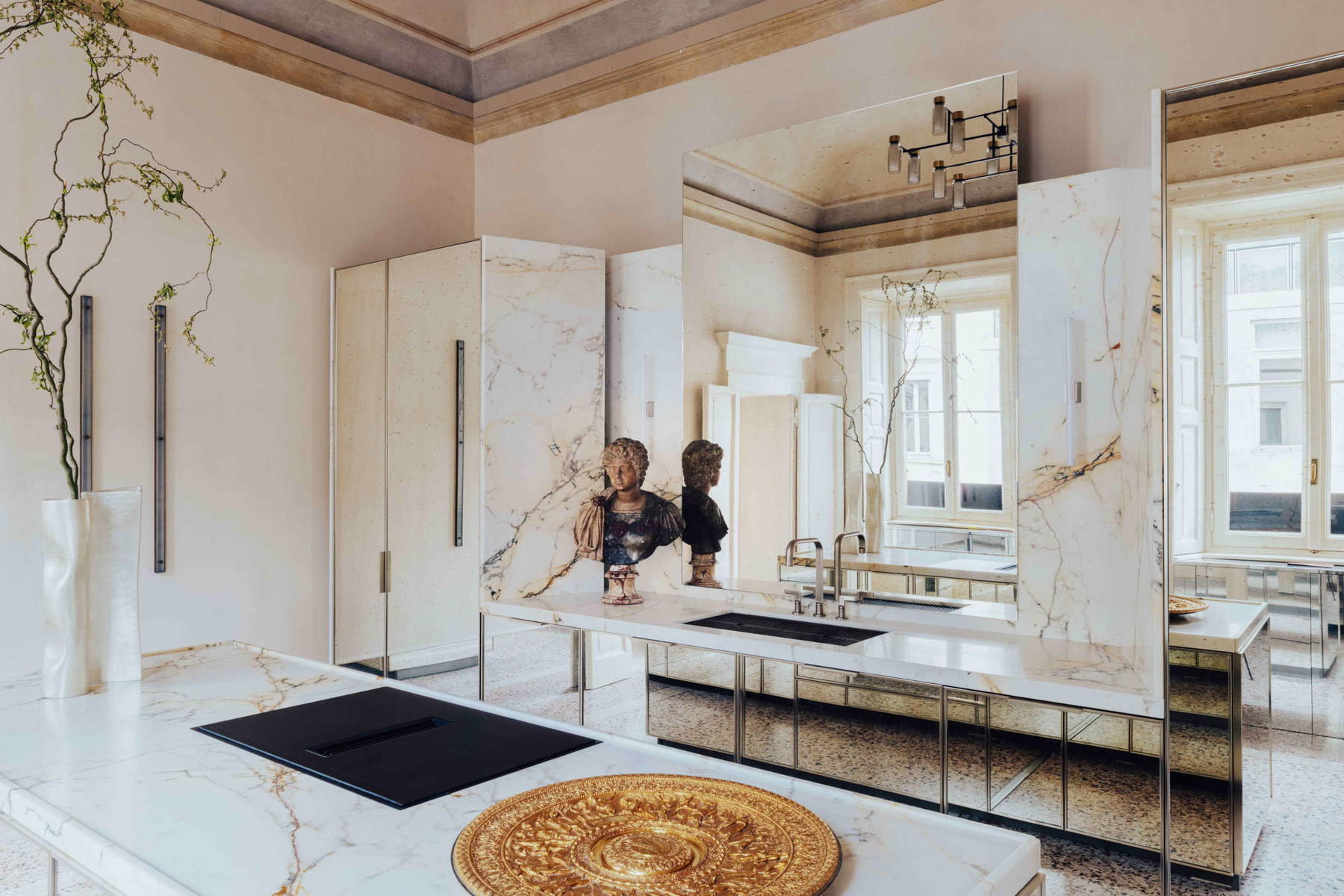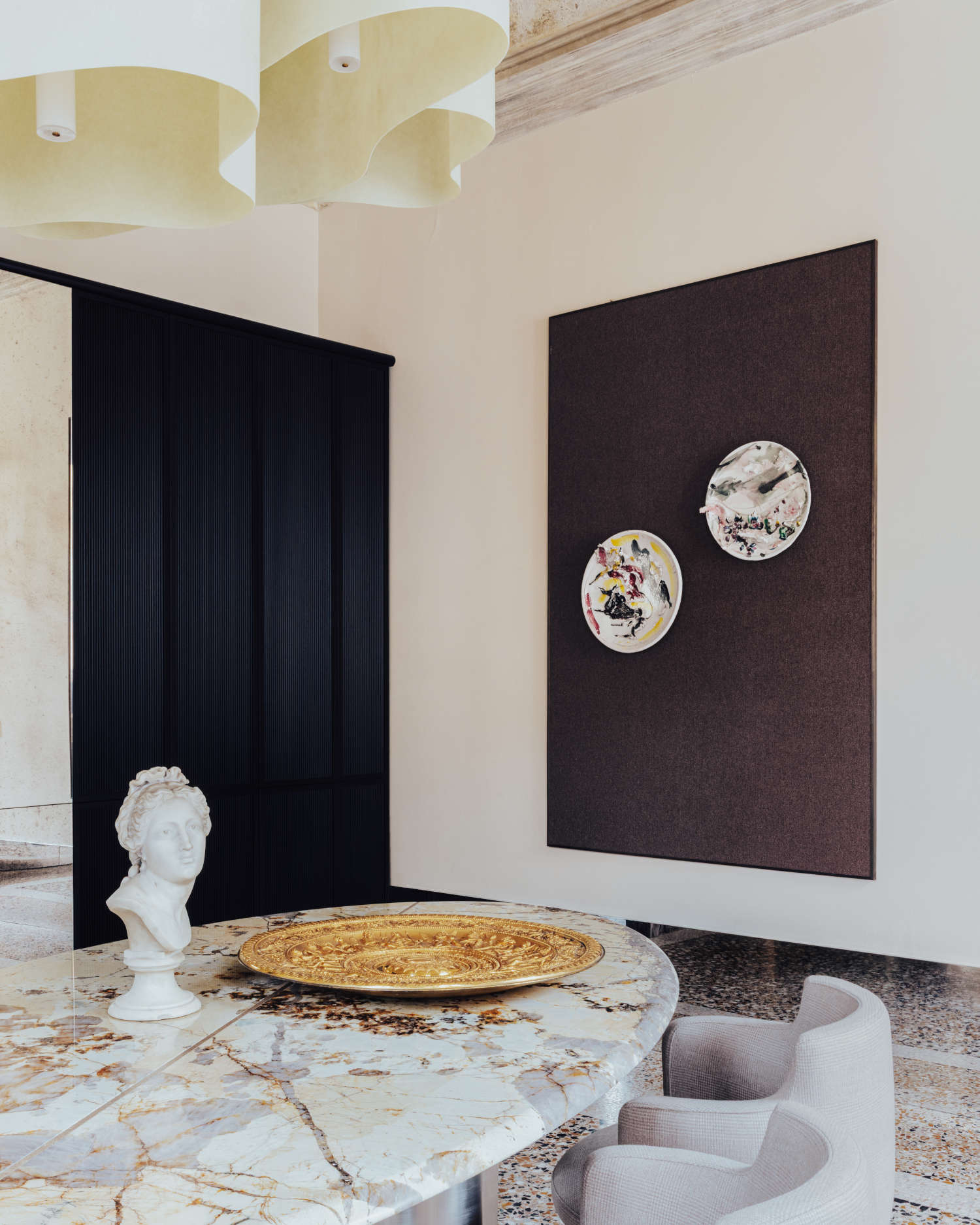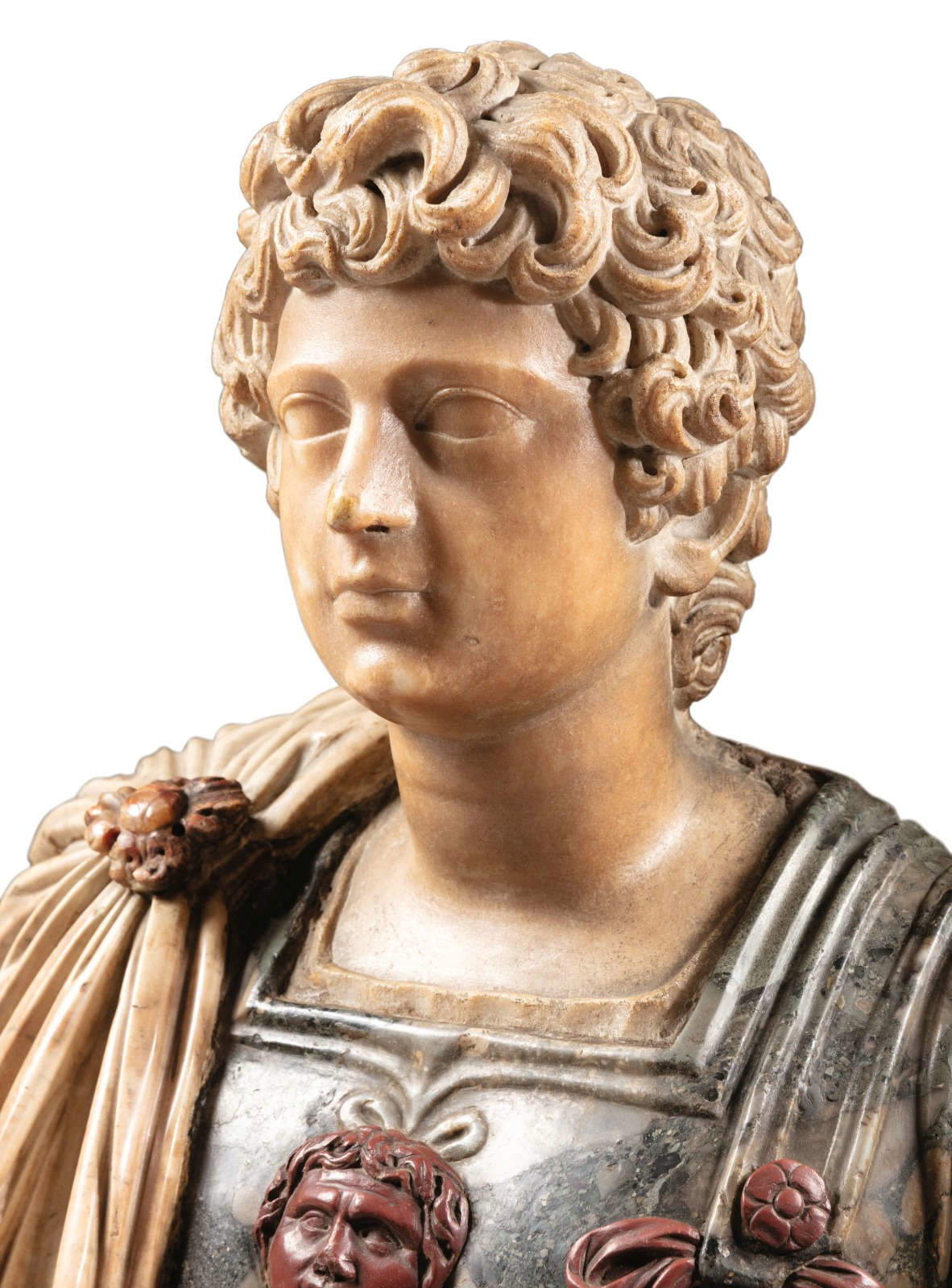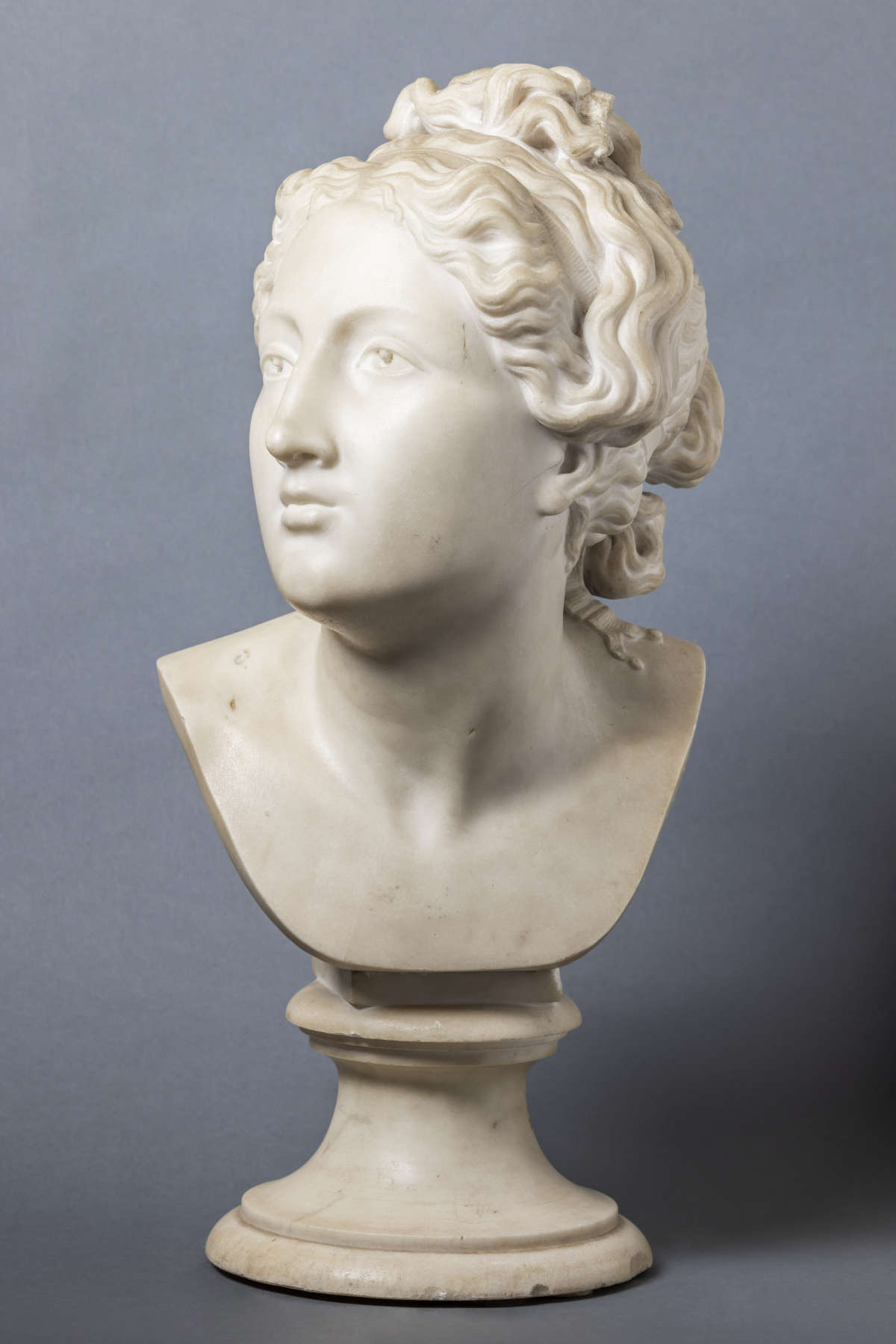In Milan, among the geometries of the neoclassical Palazzo Melzi di Cusano, the sartorial design space Count House is transformed into an art gallery where ancient and contemporary come together. Throughout 2025, the refined apartment will host an unprecedented exhibition project: the works of Lucio Fontana, the undisputed master of 20th-century art, coexist with antique masterpieces selected by several major international galleries.
The project, a collaboration between Count House, the Geneva gallery De Jonckheere, Brun Fine Art and Lucas Ratton, is not limited to the simple display of artworks, but aspires to redefine the way in which art and design dialogue within the inhabited space. Art thus becomes an integral part of the environment, enriching its volumes and visual narrative, in a staging that combines sensory awe with reflection on time, matter, and beauty.
The soul of the project lies in the presence of the works of Lucio Fontana, an artist symbolic of the break with traditional painting and founder of the Spatialist movement. His famous cut canvases, the Spatial Concepts, represent not only an iconic gesture, but a physical and conceptual opening to space, emptiness and infinity.
Inside Count House, these cuts are harmoniously grafted into environments already strongly marked by design refinement, creating a visual and poetic tension between matter and absence, between modern gesture and antique decoration. A juxtaposition intended to find a surprising narrative coherence with the furniture and the other works on display. Also completing the homage to Fontana are two ceramics from the 1950s, which testify to the artist’s versatility and his intimate relationship with matter.


The dialogue with contemporary art is complemented by the impressive presence of works selected by Brun Fine Art, an international gallery of reference for sculpture and antique furniture. Objects with a strong evocative power, such as the red porphyry vase and pedestal from Rome, the result of an assemblage of different eras that recalls Piranesi’s archaeological fantasies, enrich the space with historical and symbolic suggestions. Next to this piece, the porphyry vase with ram’s heads, also Roman and dating from the 18th century, embodies the continuity of classical art through the centuries, with a clear reference to imperial power and Renaissance erudition.
The exhibition is enriched with additional artistic gems such as the Torlonia Centrotavola, gilded bronze plates from the 19th century that celebrate the zodiac and the wine cycle. Commissioned by the historic Roman aristocratic family, they are attributed to Charles Crozatier, a refined French bronze artist known for his ability to combine aesthetics and function. Each plate is a sculpted narrative that restores a precise image of 19th-century culture and taste. Sculptures such as the 17th-century bust of a young Prince Antoninus, which echoes the Borghese type with poignant stylistic precision, also stand out. It is a sculpture that carries the memory of imperial Rome and that of European aristocratic collections. Of equal importance is the satyr in antique red, an allegory of Dionysian pleasure sculpted with lightness and irony, reflecting the neoclassical and antiquarian aesthetics of the 19th century.
Reinforcing the sculptural dimension of the exhibition is the Portrait of Antonio Canova signed by Raimondo Trentanove in 1822. The artist, a pupil and direct collaborator of the Venetian master, realizes here a tribute with a strong documentary and artistic value, derived from the famous self-portrait of 1812. Trentanove conveys all the nobility of Canova, fitting into the neoclassical tradition with sobriety and respect. This is followed by the Bust of Aphrodite of 1848, signed by Jean Baptiste Fossin, a celebrated sculptor and goldsmith in post-imperial Paris. This Carrara marble sculpture combines the formal purity of Greco-Roman art with delicate introspection, demonstrating Fossin’s skill in treating marble with softness and emotional intensity. A work that synthesizes classicism and sentiment, fitting perfectly into the exhibition itinerary of Count House.



The itinerary is further enriched by the selection of tribal art works curated by Lucas Ratton Gallery, which add further temporal and cultural stratification to the visual narrative of the space. Masks and sculptures from non-European cultures establish an unsurprising dialogue with Western aesthetics, underscoring how art, in every time and place, stems from a universal need for expression. This curatorial approach aims to avoid the easy aestheticization of the exotic, emphasizing rather the power of contrast and the evocative power of distant materials, faces and rituals.
Count House does not merely exhibit art, but wants to integrate it into its essence. The project, supported by the Conte brand, intends to stand as an expression of a philosophy of living that no longer separates the everyday from the aesthetic, functionality from inspiration. The juxtaposition of ancient, contemporary and tribal works is part of a vision oin which each element contributes to building a sophisticated, layered, vibrant narrative. This is thus intended to be much more than a design apartment: it is a true cultural oasis, in which art and furniture come together to restore an idea of beauty that is never an end in itself, but always linked to a thought, a memory, a narrative.
 |
| Milan, Casa Conte space proposes a way of living under the banner of art and design |
Warning: the translation into English of the original Italian article was created using automatic tools. We undertake to review all articles, but we do not guarantee the total absence of inaccuracies in the translation due to the program. You can find the original by clicking on the ITA button. If you find any mistake,please contact us.